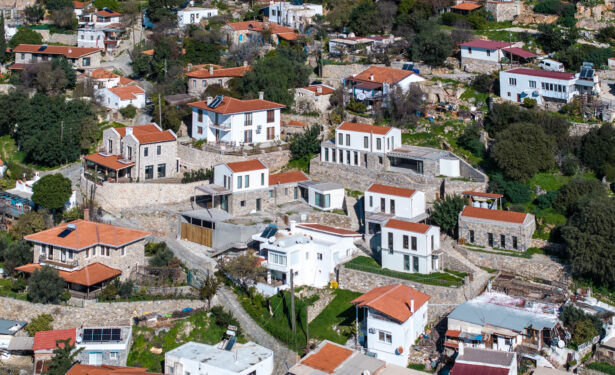
- 14 May 2024
- 2133 defa okundu.
Datça Emecik Houses
Datça Emecik Houses, designed by Erginoğlu & Çalışlar Architecture, is located in Muğla.
Emecik village, 25 km away from Datça, hosts the S, Ş, T and U houses. Rumor has it that Spanish pirates passing off the coast of Datça abandoned patients suffering from leprosy in this village, located on the slope of the mountain. While these patients were living doomed to their fate on this hill, they were healed thanks to the beautiful weather of Datça. Those who recovered considered this place their home and started to live by establishing the village of Emecik at the foot of the hill. In Sarıliman, just below the village, there are ruins of a Doric temple dedicated to Apollo, dating back to the Hellenistic period.
Four doctor clients would like to have a house built for each to settle in when they retire, in the project area where there are ruins of stone houses. These ruins of old village houses, which are in very bad condition and are completely unusable, were never registered. Newer buildings in the immediate vicinity were built out of scale, in complete ignorance of these buildings.
The aim is to strengthen these ruins of stone houses with local characteristics, and make them a part of the design. House plans were prepared by taking the exact measurements of these ruins, which sit on a sloping land and whose measurements remained unknown. The raft foundation and hidden column-beam system, built in accordance with the regulations, were restored with the stones found around the ruins of abandoned buildings.
While the mixed system of stone and reinforced concrete on the ground floors forms the heavy base of the villas, the modern additional light mass at the top hosts the bedrooms. Efforts have been made to make these new, contemporary additions simple and plain, reflective of their period and in harmony with the Mediterranean identity. In addition to the main masses, outbuildings were created within permitted measurements and distance. These additions are planned to be framed at the same level as the beam on the stone wall. Between these two masses, a courtyard (hayat) was created with wooden rafters. Small balconies were placed on some of these pergolas, also with a wooden floor. The project was completed with three different materials: The old stone wall, the new stone wall built with old stones, white plastered walls on steel construction, and tiles on the roof.
Etiketler



















































